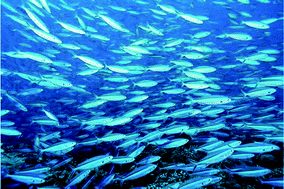The role of marine n-3 fatty acids in improving cardiovascular health: a review
Abstract
Omega 3

a
St. Boniface Research Centre, 351 Tache Ave, Winnipeg, Manitoba, Canada R2H 2A6
E-mail:
umnichot@cc.umanitoba.ca
Tel: +1 204 235-3954
b Faculty of Dentistry, Isfahan Medical Sciences University, Isfahan, Iran
c
St. Boniface Research Centre, 351 Tache Ave, Winnipeg, Manitoba, Canada R2H 2A6
E-mail:
mmoghadasian@sbrc.ca
Tel: +1 204 235-3934
Omega 3

 Please wait while we load your content...
Something went wrong. Try again?
Please wait while we load your content...
Something went wrong. Try again?
T. Nicholson, H. Khademi and M. H. Moghadasian, Food Funct., 2013, 4, 357 DOI: 10.1039/C2FO30235G
To request permission to reproduce material from this article, please go to the Copyright Clearance Center request page.
If you are an author contributing to an RSC publication, you do not need to request permission provided correct acknowledgement is given.
If you are the author of this article, you do not need to request permission to reproduce figures and diagrams provided correct acknowledgement is given. If you want to reproduce the whole article in a third-party publication (excluding your thesis/dissertation for which permission is not required) please go to the Copyright Clearance Center request page.
Read more about how to correctly acknowledge RSC content.
 Fetching data from CrossRef.
Fetching data from CrossRef.
This may take some time to load.
Loading related content
